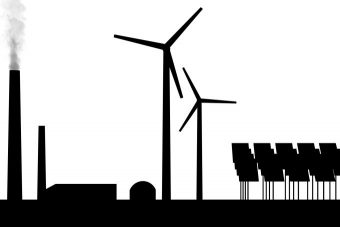
Renewable energy deployment grew at a near-record pace in 2017, increasing by 14% to account for 18% of total US electricity generation, double its contribution a decade ago, and bringing it hot on the heels of the nation’s nuclear energy fleet, according to Bloomberg New Energy Finance’s new Sustainable Energy in America Factbook 2018.
Published on Thursday, Bloomberg New Energy Finance (BNEF) published its 2018 edition of the Sustainable Energy in America Factbook for the Business Council for Sustainable Energy. The Factbook provides the latest market information for a wide variety of American industries including renewable energy, energy efficiency, and natural gas.
According to the latest findings, renewable electricity generation in 2017 increased by an impressive 14% to an estimated 717 terawatt-hours (TWh), up from 628 TWh in 2016, bringing renewable energy’s contribution to the total US power mix up to 18%, double its contribution a decade ago. This near-record growth took place despite strong headwinds set in motion by the election of Donald Trump as US President, thanks in part to a rebound in hydro generation which increased by 13%, benefiting from stronger reservoir levels on the West Coast after prolonged drought.
“Sustainable energy deployment soared to record levels in 2017, cementing its role as a key contributor to US energy,” explained Rachel Luo, the lead BNEF author of the report. “At 18% of the power mix, renewable energy resouces including hydropower are making nearly as large a contribution to US electricity generation as the country’s nuclear fleet. Meanwhile, the falling price of newer technologies such as lithium-ion batteries is fueling the transformation of both the transportation and power sectors.”
Not to be outdone, however, BNEF tracked “a chart-busting number of wind and solar projects” that were built in 2016 and had the first full year of operation in 2017, bringing nearly 23 GW (gigawatts) worth of new projects to play and increasing non-hydro generation by 15% to 413 TWh.
“The massive and historic transformation of the U.S. energy sector clicked into a higher gear in 2017, despite new policy uncertainties,” the authors of the Factbook concluded. “Renewable deployment grew at a near-record pace, energy productivity and GDP growth both accelerated, and the U.S. became a serious player in the global liquefied natural gas market. All of this combined to squeeze U.S. greenhouse gas emissions to a 25-year low, while keeping costs in check for consumers.”
The strong performance should also continue with an impressive 18.4 GW of new renewable energy projects added to the mix during 2017, second in number only to the 22.7 GW installed during 2016. When looked at in the long-term, renewable energy has accounted for 55% of all new capacity build across the past 10 years, with non-hydro renewables representing the largest share of all US new installations with 62% in 2017.
Further, it appears that the strong growth in renewable energy generation capacity has begun having an impact on the country’s greenhouse gas emissions levels, bringing US GHG emissions to a 25-year low while still creating jobs.
“The performance is proof that clean energy delivers for the American economy,” Lisa Jacobson, President of the Business Council for Sustainable Energy, declared in summarizing the findings of this year’s Factbook. “The 2018 Factbook demonstrates that energy efficiency, natural gas and renewable energy are generating jobs and cleaner air while reducing energy use and boosting the productivity of the American economy. The focus of national energy policy in 2018 and beyond should be to further enhance and promote the continued growth of these clean energy sectors.”
Source: cleantechnica.com



